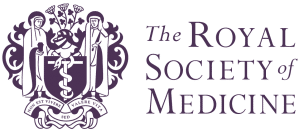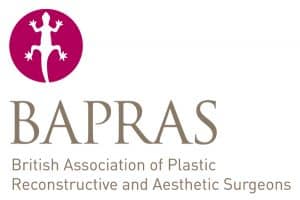
Face Procedures
Rhinoplasty (Nose Surgery)
10 Harley Street
London W1G 9PF
Rhinoplasty (Nose Surgery)

Rhinoplasty is a beautifully complex procedure that requires accurate pre-operative assessment in order to select the most appropriate surgical technique for each individual patient.
Because of the extreme variability in nasal anatomy and because of the different aesthetic and functional requests on the part of the patient, there is no such a thing as a single technique that can be considered appropriate for all patients.
The importance of surgical planning has to be emphasised, as much as the need for a logical approach to managing nasal problems.
The techniques have been evolving dramatically with a focus to achieving natural results.
I have witnessed the impressive evolution of techniques that parallel our increased understanding of nasal anatomy.
Despite these advances in knowledge, I would say that rhinoplasty remains a particularly challenging endeavour. Based on the relatively small size of the nose, one might under-estimate the complexity of its underlying structure.
Form and function are closely linked together, and alteration of one anatomic structure will invariably have a cascading effect on the adjacent structures.
Nasal surgery has been a source of fascination for me throughout my career.

This is most definitely a procedure that can be truly life-changing for the patient, and therefore is one of the most rewarding procedures for both – patient and surgeon.
There are two main surgical approaches to the anatomy of the nasal pyramid:
The endonasal approach, where all incisions are hidden within the nasal vestibule (that is, inside the nostrils).
The external columellar approach involves a minute external incision placed across the columella (the bridge of skin situated between the nostrils).
Traditional reduction rhinoplasty has given way to structure rhinoplasty, a nasal reconstructive procedure characterised by tissue preservation, reconstruction and reorientation.
Contemporary rhinoplasty is aimed at conservative and subtle anatomic changes. Rather than excisional sacrifice of large segments of cartilage or bone, a philosophy of preservation and reorientation of tissues has developed that largely eliminates the creation of unnecessary tissue voids that too often heal and scar unpredictably. Conservation surgery increases the surgeon’s control over the healing surgical result, as an appropriate equilibrium between the corrected nasal skeleton and overlying soft-tissue covering is more reliably achieved.
It is paramount to avoid excessive removal of supporting structures because it can result in a pinched, upturned tip with nasal obstruction, and this can lead to an overall “operated” look.
Rhinoplasty takes 2.5 hours to 3.5 hours depending on the complexity of the case.
It is carried out under general anaesthesia (patient is fully asleep throughout the operation) and can be scheduled as a daycase (that is, patients can have surgery in the morning and go home on the same day).
The recovery takes approximately one week. It is imperative that patients rest at home for 7 days after surgery. Taking one week off- work is strongly advisable.
The nasal pyramid will be covered and protected with a moldable cast for 7 -10 days. This has to be kept untouched and perfectly dry until it is removed in clinic.
The sutures (stitches) at the base of the nose will be trimmed 7 days after surgery.
Most of the swelling will subside after 6 months, however some residual swelling will still be present after that, and patients will be able to appreciate their final results after 18 months.
It is important to understand and accept the length of the full recovery and to be very patient with it.
It is imperative to avoid blood thinners (aspirin, nurofen, volatarol, anti-inflammatories and pain-killers) during the 4 weeks prior to the surgery. These medications could increase the amount of bleeding during the surgery and therefore reduce the visibility within the surgical field and hence reduce the accuracy of the procedure.
It is advisable to avoid contact sports for 18 months after surgery.
I do not adhere to one aesthetic goal in rhinoplasty, that is, I don’t think there is a standardised ideal aesthetic shape to be reproduced for all patients.
I will carefully listen to each patient’s requests and will work with each case individually and will develop a customised plan for each patient.
I also feel it is important for the nose to be in balance with other facial features, such as the width of your cheeks, and the projection of your chin.
To book a consultation call 07943 277 215 or email clinic@lindafiumara.com
Face Procedures
Rhinoplasty (Nose Surgery)
Rhinoplasty
(Nose Surgery)
In years past we could have not dreamed of transforming our noses and thus substantially enhance our beauty. This is now possible if you approach a surgical excellence that you can trust.
Rhinoplasty is a beautifully complex procedure that requires accurate pre-operative assessment in order to select the most appropriate surgical technique for each individual patient.
Because of the extreme variability in nasal anatomy and because of the different aesthetic and functional requests on the part of the patient, there is no such a thing as a single technique that can be considered appropriate for all patients.
The importance of surgical planning has to be emphasised, as much as the need for a logical approach to managing nasal problems.
The techniques have been evolving dramatically with a focus to achieving natural results.
I have witnessed the impressive evolution of techniques that parallel our increased understanding of nasal anatomy.
Despite these advances in knowledge, I would say that rhinoplasty remains a particularly challenging endeavour. Based on the relatively small size of the nose, one might under-estimate the complexity of its underlying structure.
Form and function are closely linked together, and alteration of one anatomic structure will invariably have a cascading effect on the adjacent structures.
Nasal surgery has been a source of fascination for me throughout my career.
This is a procedure where accuracy, patience, and an artistic eye play a huge role in achieving a satisfactory result.
This is most definitely a procedure that can be truly life-changing for the patient, and therefore is one of the most rewarding procedures for both – patient and surgeon.
There are two main surgical approaches to the anatomy of the nasal pyramid:
The endonasal approach, where all incisions are hidden within the nasal vestibule (that is, inside the nostrils).
The external columellar approach involves a minute external incision placed across the columella (the bridge of skin situated between the nostrils).
Traditional reduction rhinoplasty has given way to structure rhinoplasty, a nasal reconstructive procedure characterised by tissue preservation, reconstruction and reorientation.
Contemporary rhinoplasty is aimed at conservative and subtle anatomic changes. Rather than excisional sacrifice of large segments of cartilage or bone, a philosophy of preservation and reorientation of tissues has developed that largely eliminates the creation of unnecessary tissue voids that too often heal and scar unpredictably. Conservation surgery increases the surgeon’s control over the healing surgical result, as an appropriate equilibrium between the corrected nasal skeleton and overlying soft-tissue covering is more reliably achieved.
It is paramount to avoid excessive removal of supporting structures because it can result in a pinched, upturned tip with nasal obstruction, and this can lead to an overall “operated” look.
Rhinoplasty takes 2.5 hours to 3.5 hours depending on the complexity of the case.
It is carried out under general anaesthesia (patient is fully asleep throughout the operation) and can be scheduled as a daycase (that is, patients can have surgery in the morning and go home on the same day).
The recovery takes approximately one week. It is imperative that patients rest at home for 7 days after surgery. Taking one week off- work is strongly advisable.
The nasal pyramid will be covered and protected with a moldable cast for 7 -10 days. This has to be kept untouched and perfectly dry until it is removed in clinic.
The sutures (stitches) at the base of the nose will be trimmed 7 days after surgery.
Most of the swelling will subside after 6 months, however some residual swelling will still be present after that, and patients will be able to appreciate their final results after 18 months.
It is important to understand and accept the length of the full recovery and to be very patient with it.
It is imperative to avoid blood thinners (aspirin, nurofen, volatarol, anti-inflammatories and pain-killers) during the 4 weeks prior to the surgery. These medications could increase the amount of bleeding during the surgery and therefore reduce the visibility within the surgical field and hence reduce the accuracy of the procedure.
It is advisable to avoid contact sports for 18 months after surgery.
I do not adhere to one aesthetic goal in rhinoplasty, that is, I don’t think there is a standardised ideal aesthetic shape to be reproduced for all patients.
I will carefully listen to each patient’s requests and will work with each case individually and will develop a customised plan for each patient.
I also feel it is important for the nose to be in balance with other facial features, such as the width of your cheeks, and the projection of your chin.
As featured in The Evening Standard and The Telegraph –










Copyright © 2023 Dr Linda Fiumara MD
Designed by Createch